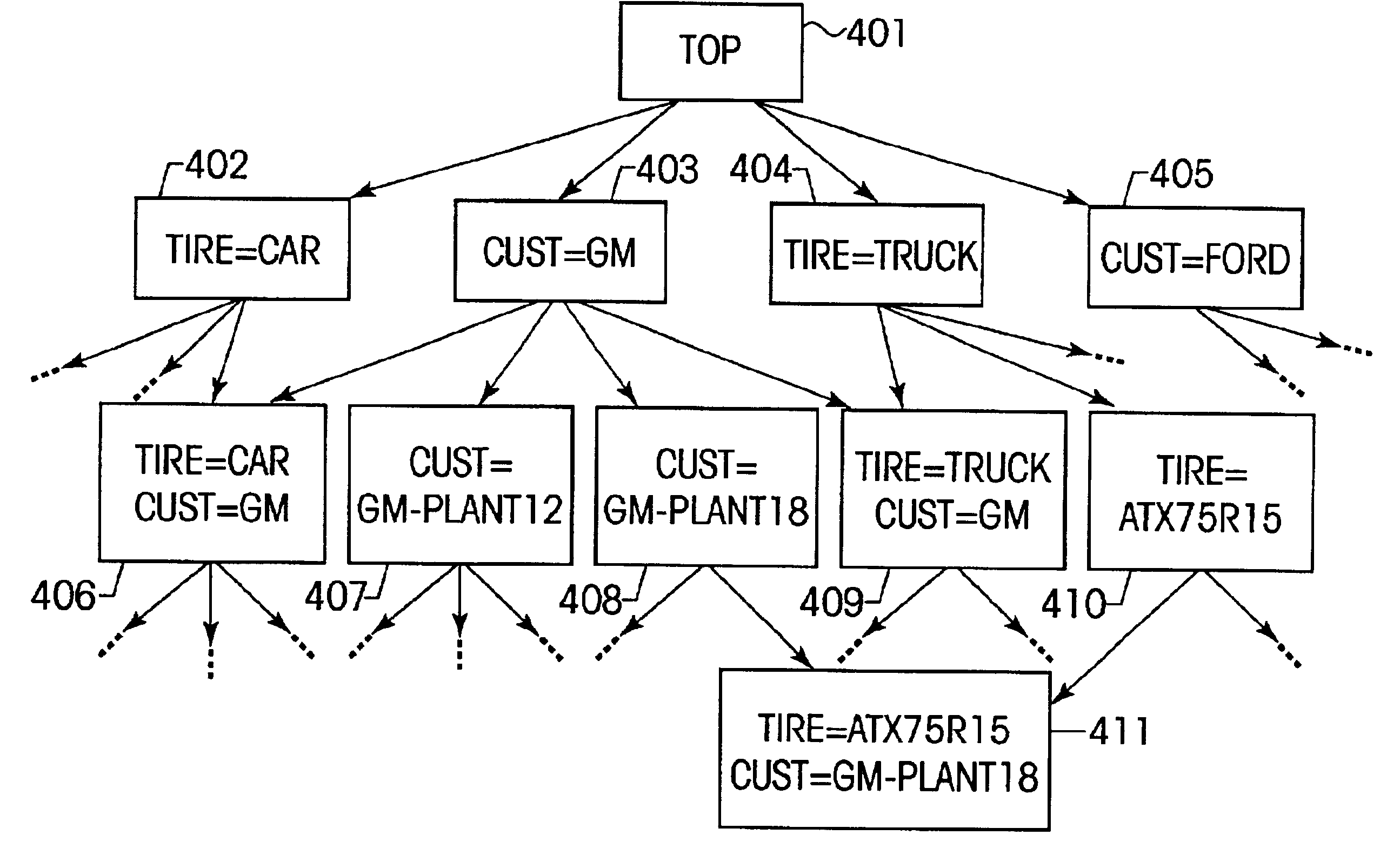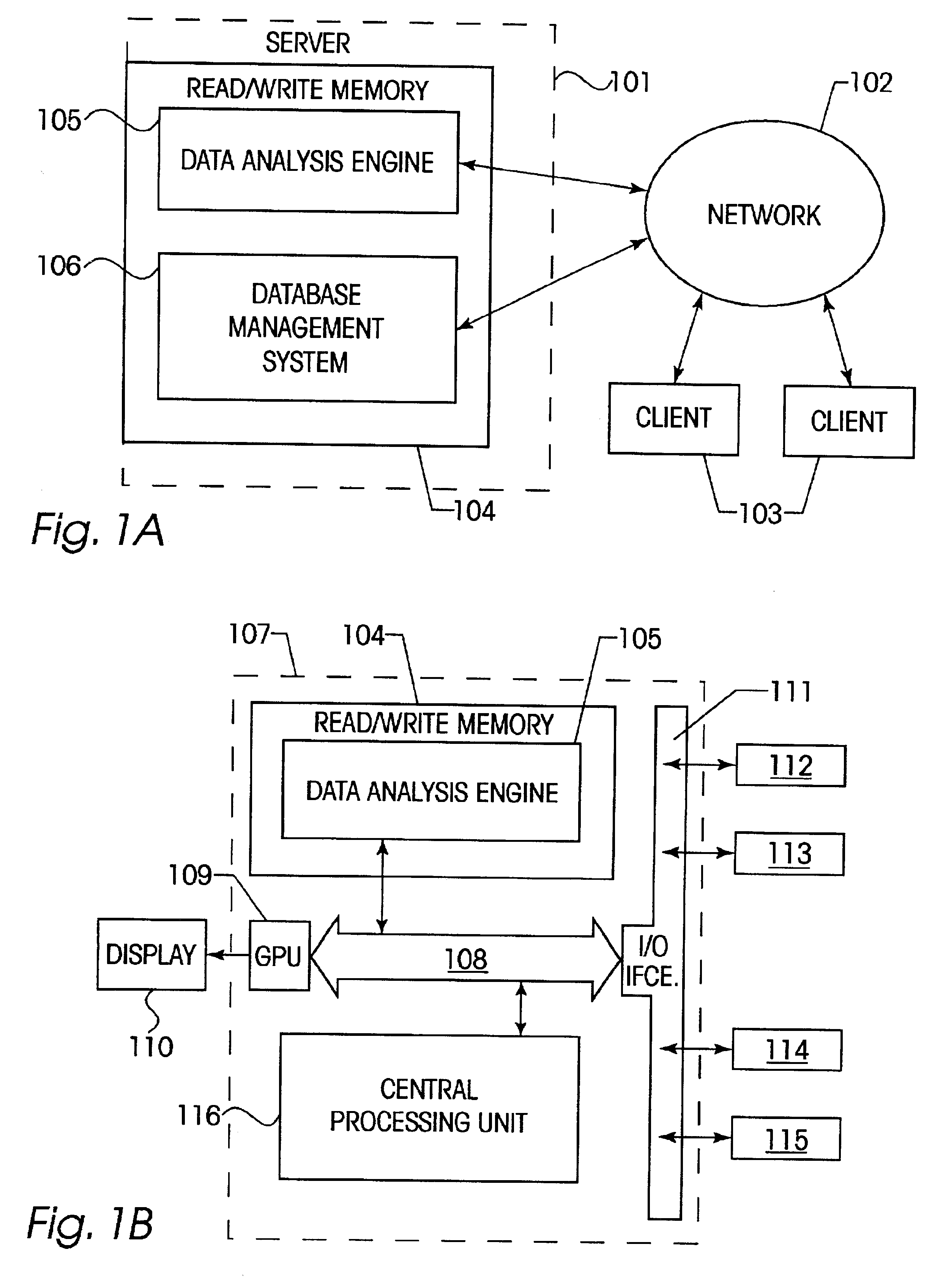Method and system for partial-order analysis of multi-dimensional data
a multi-dimensional data and partial-order technology, applied in the field of computer databases, can solve the problems of high computational cost, large creation effort, and model not well-suited to handling whole-part or hierarchical relations
- Summary
- Abstract
- Description
- Claims
- Application Information
AI Technical Summary
Benefits of technology
Problems solved by technology
Method used
Image
Examples
Embodiment Construction
Description—FIGS. 1-2—High-level Overview
[0075]The invention will be described primarily as a method (algorithm plus data structures) to be implemented within a data processing computer system. However, persons skilled in the art will recognize that the present invention may be manufactured and distributed in the form of a computer program, software library, state control specification for a programmable logic device, logic embedded within a computational device, a specification in some formal language intended for transformation into computational behavior, or any combination thereof.
[0076]FIG. 1A depicts the invention as a data-analysis engine 105 existing within a Read / Write memory 104 of a computer Server system 101. Server 101 is connected through a network 102 to any number of Clients 103, to facilitate interactive analysis, or to present the results of data analysis. In this type of architecture, an analysis engine 105 would typically connect to a DBMS (Database Management Sy...
PUM
 Login to View More
Login to View More Abstract
Description
Claims
Application Information
 Login to View More
Login to View More - R&D
- Intellectual Property
- Life Sciences
- Materials
- Tech Scout
- Unparalleled Data Quality
- Higher Quality Content
- 60% Fewer Hallucinations
Browse by: Latest US Patents, China's latest patents, Technical Efficacy Thesaurus, Application Domain, Technology Topic, Popular Technical Reports.
© 2025 PatSnap. All rights reserved.Legal|Privacy policy|Modern Slavery Act Transparency Statement|Sitemap|About US| Contact US: help@patsnap.com



